This Primal Clay
There are roughly 27,000 unique Magic cards and counting. It seems impossible that even one exists at all.
I have a hard time imagining how a single Magic card could ever exist. In the abstract, it seems trivial, but that is because we have material precedence – 27,000 individually unique Magic cards have been created since 1993, with more and more appearing seemingly every day. I could “make” a Magic card fairly easily in about ten minutes with the proper template online, or with a stack of colored pencils and a blank sheet of printer paper on my kitchen table. It’s not hard to replicate what is already there and add a novel twist.
And yet, I remain perplexed and a bit awestruck that I can hold a Magic card in my fingertips but have no clear trace of its provenance. How many invisible hands were involved in molding this ball of primal clay?
The most obvious roleplayers responsible for this are a list of recognizable names in well-documented sources. Consider Sakura-Tribe Elder specifically. Brian Tinsman led Champions of Kamigawa design. Randy Buehler was in the room. So were Brady Dommermuth and Elaine Chase and Mark Rosewater, simultaneously, or in passing. Brian Schneider led development, which follows design, but whose relationship is symbiotic and respectfully combative. These two groups represent the mechanical push-and-pull of Research and Development in the building. Before R&D’s involvement, a team of worldbuilders composed a master document establishing the parameters of the plane and its primary real-world influences – in this case feudal Japan – lending guard rails to the set’s aesthetic boundaries.
Somewhere along the way, art director Jeremy Cranford assigned Carl Critchlow a short description for the illustration commission. After some correspondence to approve the thumbnail sketches of the composition, Critchlow got to work and moved around some pigments on a canvas or a hardboard, whatever surface he preferred at the time. He then scanned the painting and submitted a high-definition image of an anthropomorphized snake holding a walking staff – two walking staves, actually – because these shaman-folk have four arms, and they’re getting older, so they need the extra support underfoot. Beneath the card’s rules text, there reads a very short story written in italics:
“There were no tombstones in orochi territory. Slain warriors were buried with a tree sapling, so they would become a part of the forest after death.”
If you’ve played this card before, you’ll know this phrase mirrors the creature’s gameplay loop: sacrifice the Elder to search up a basic land, thus “becoming part of the forest after death.” The rules text is a collective effort of the aforementioned design and development teams and is difficult to attribute to any single individual. Flavor text, however, can often be traced back to one writer, even when minor edits transpire before final copy is approved. I happen to know this flavor text in particular came from Rei Nakazawa. Some of the invisible hands who shape this clay are never explicitly credited.
In fact, most of them aren’t. Beyond flavor and rules text, there is also the matter of balancing numbers – mana cost, power and toughness, activated abilities, alternate costs, and anything else that corresponds to digits on a card face. Play design architects like Andrew Brown solve such problems in contemporary R&D. Finer details like the shape of the set symbol and the look of the card frame are the work of UX designers and graphic artists. Daniel Holt is in charge of the former at the moment; the latter remain an amorphous group of people dragging Photoshop templates over PNG’s somewhere deep within WotC’s creative departments.
One layer deeper reveals even weirder jobs. Did you know that somebody is responsible for isolating certain sections of the illustration to be highlighted in foil? This underprinting layer provides key information to the manufacturing teams, as it instructs them where to apply the first layer of white ink in the offset printing process. Someone else must then format all the card files to be sent to printers halfway across the world. Before the internet, this was done by shipping hard drives via expedited air mail, which led to tremendous time-stresses and a series of infamous near-misses. Nowadays, it’s probably a file transfer service, but again, I don’t know for certain.
Speaking of printers – Cartamundi in Turnhout, Belgium was the first major distributor of Magic in 1993. The plant remains a fully-operational business partner of Wizards of the Coast and has established printing facilities on nearly every continent across the world. The precise roles of many workers in these factories remain opaque to me. Without further research, I can only speculate who is generally involved at every position: the ones who manually load the millions of pounds of cardstock into the rollers, the ones who mix the vats of dyes to the company’s exact specifications, the ones who run sheet metal through laser cutters to craft the master plates, the ones who color-correct the project files to match the ink formulas, the bosses and executives and managers who keep track of payroll and utilities and raw materials, the technicians who maintain the conditions for ideal humidity in the building, the truckers who show up from distant lumber mills to fulfill supply orders, the machinists who sequence and press the ordered layers of paper to assure the signature blue core remains sandwiched in-between the white fronts and backs, the glue that holds the cardstock together, the chemists who mixed that glue, the animal livestock who fed for years and years on grass fields before being reduced to such materials, the butcher who cut them up…
…and then you have to consider the booster pack, the plastic manufacturer who stretched and cut the shiny polyethylene wrapping, the marketing manager back at headquarters who decided Myojin of Cleansing Fire by Kev Walker would be one of five select pieces of key art for Champions of Kamigawa, the observant quality control team at Cartamundi who cross-checked the collated cards before organizing them into packs to reduce the presence of misprints, the heavy-duty shredders assigned to their destruction…
…the shady opportunists who disobeyed orders and snuck them away to sell on secondary markets instead…
…the translators and localizers who also remain anonymous, despite their precious efforts…
…i traduttori che rimangono ancora anonimi, nonostante i suoi sforzi incalcolabili…
…the busy ports, the enormous shipping containers, the captains who cross oceans manning cargo holds packed to the brim with hundreds of tons of Magic cards, the 21st-century sailors who map the Atlantic so thoroughly to assure the other side of the Earth remains not a mystery but the guarantee of a paycheck, the brutal routine of crossing, the dreams they have as their leviathans carve the waves of transoceanic commerce…
…the booster boxes that befall the big-box buyers, the local game store managers who leave their necks permanently transfixed beneath the guillotines of fiscal risk just so we all have a place to play, the backpack grinders, the aspiring PT spikes, the middle schoolers, the filthy casuals, the livestream influencers auctioning their pulls to intangible audiences in their tiny smartphone screens, gnawing participants of the ostentatious gamble, any ethical interrogation of their predatory relationship overruled by the thrill of the treasure hunt…
…the gestalt creature who, at some point, nicknamed this card “Steve,” the culture that perpetuates this form of endearment without knowing its true origin, like an elementary school playground myth…
…the decades of time passed that transformed Sakura-Tribe Elder into an icon of a shared tradition...
…the writers, the readers, the buyers, the sellers, the players, the millions of Steves shuffled into sleeved decks tucked away in dark closets everywhere, the archaeologists five hundred years into the future tasked to decipher its lineage and its code, Sakura-Tribe Elder, Carl Critchlow, Rei Nakazawa, Brian Tinsman, Champions of Kamigawa, a torii gate, a Deckmaster game…
…




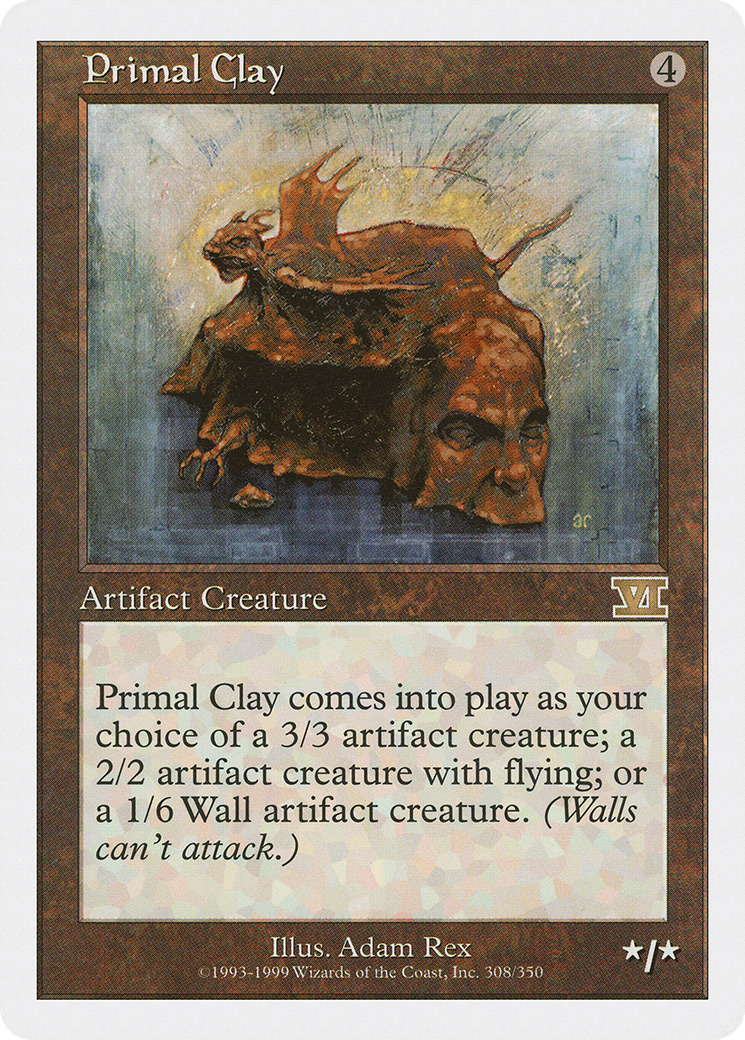
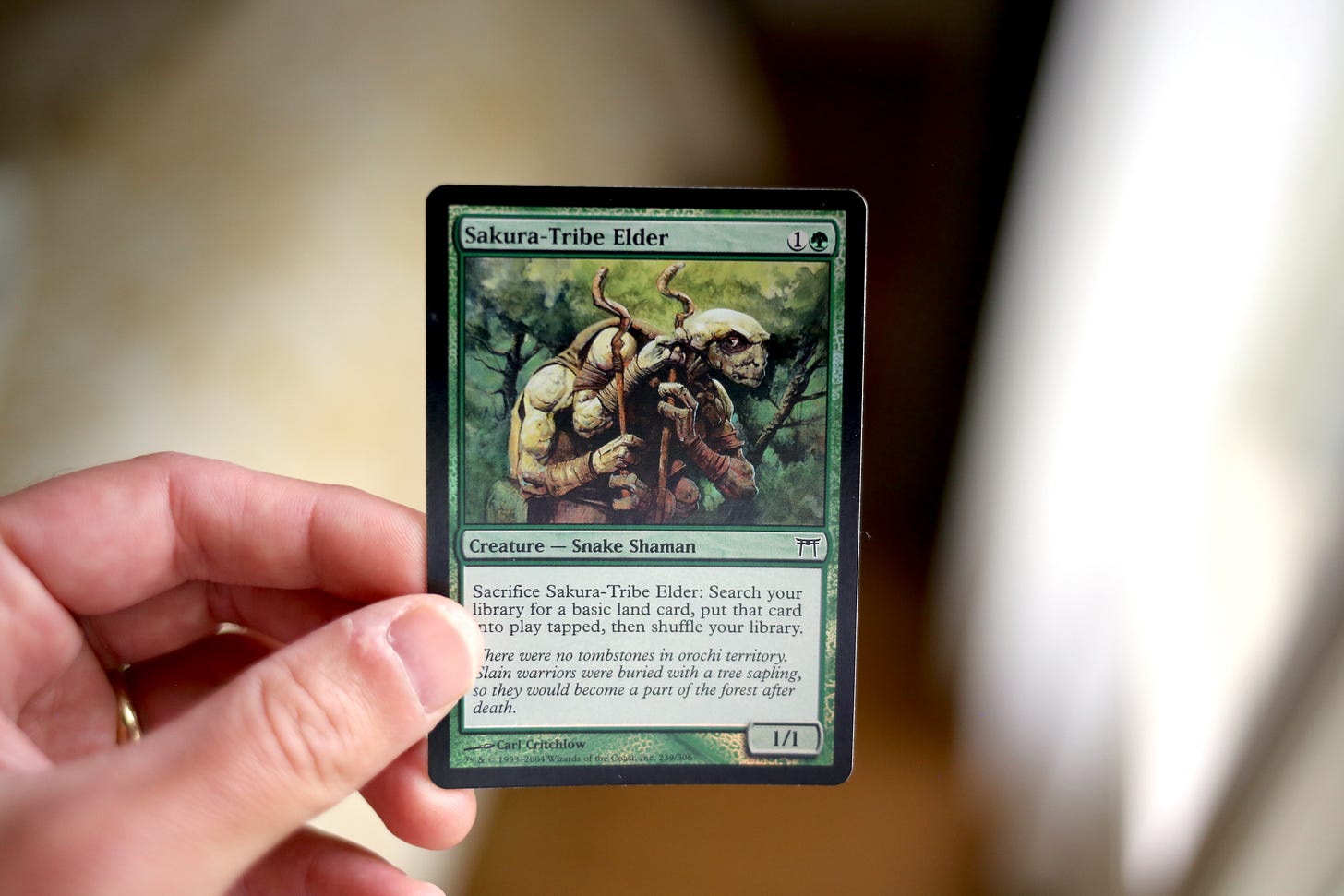
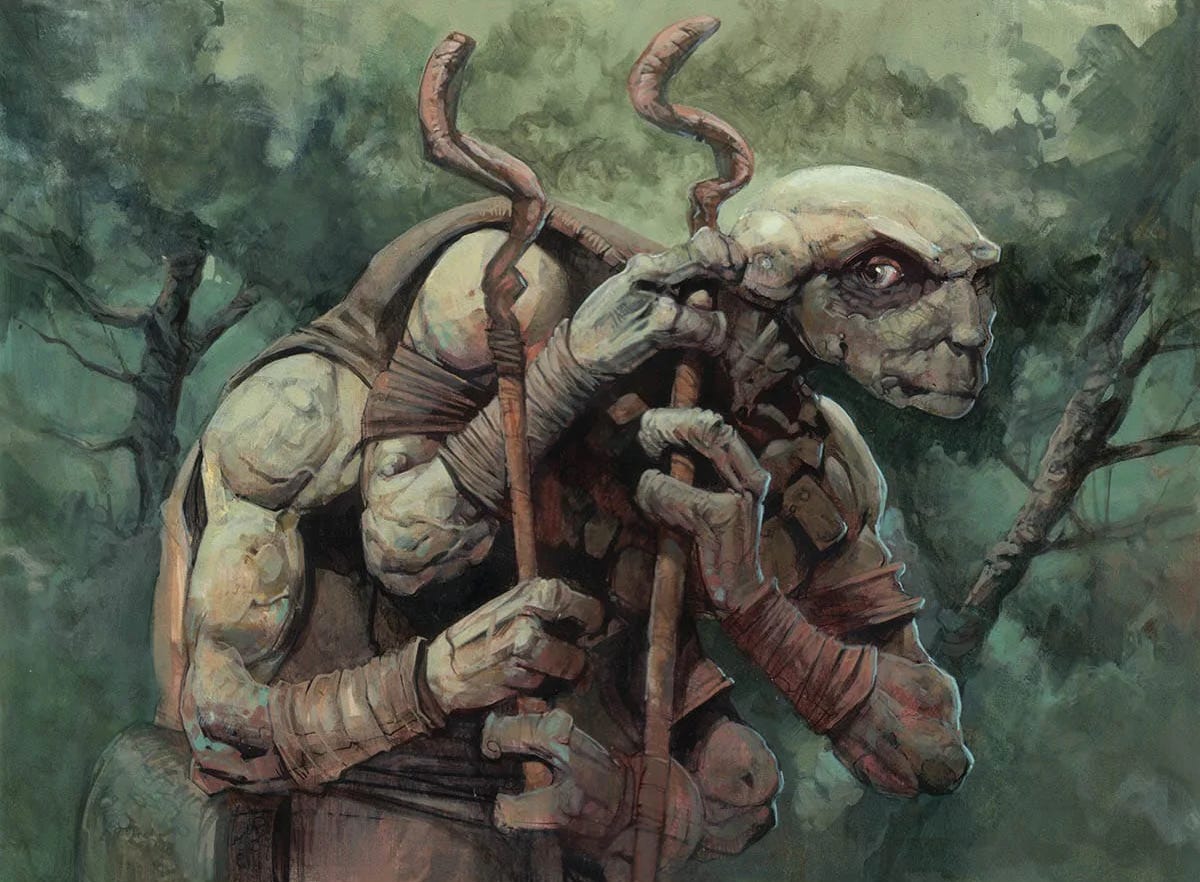
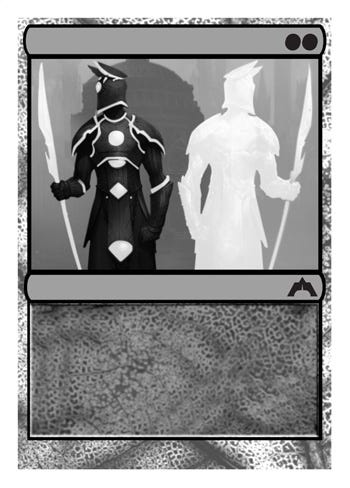
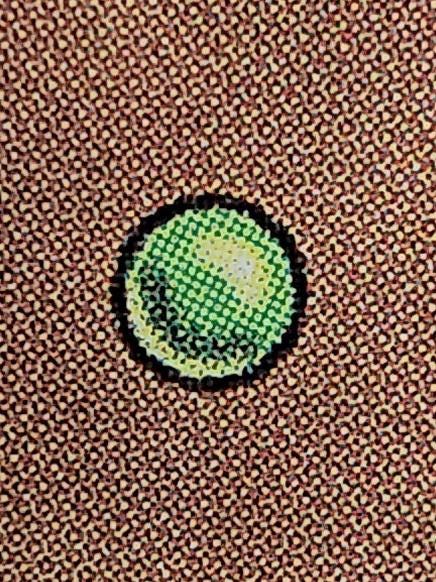

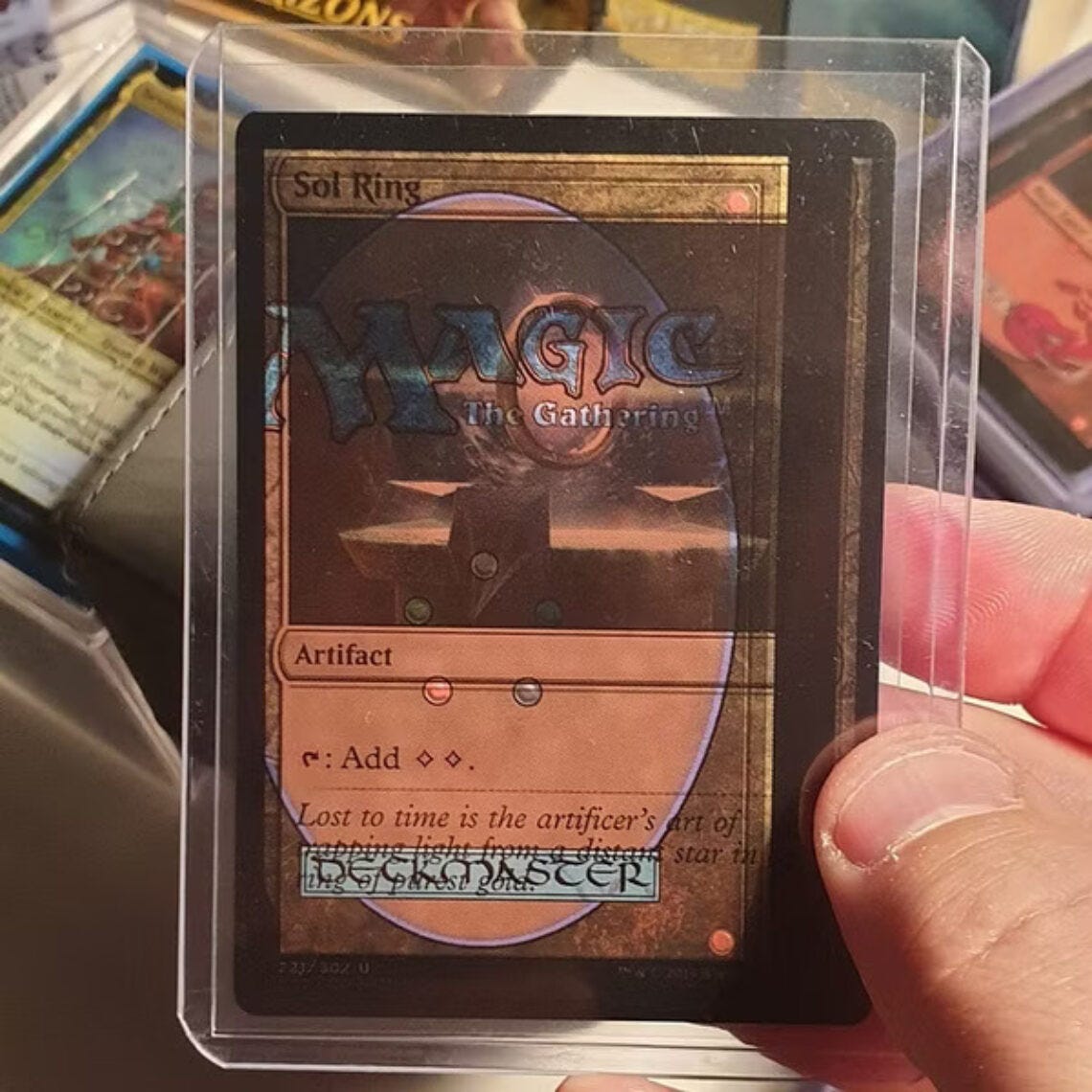

This was beautiful to read—evocative of Olga Tokarczuk’s Flights or Books of Jacob in its roving view. In one way, this whole latticework of relations is a testament to the effects of global capitalism and the ways that commodities become reified as things, but more than that—as you’re pointing out—is the kind of miraculous concrescence that happens for an uncountable number of forces to converge in a card that is almost always tossed in the graveyard as soon as it’s played. Anyway, I’m going to hug my Steve a little tighter tonight.
Loved this piece. Reminds me of a monologue from a Wallace Shawn play that meditates on “commodity fetishism” and the way that our conceptions of price and value hide the relations between goods and consumers. It’s the second half of this excerpt: https://redlette.red/permalink.php/?theday=25